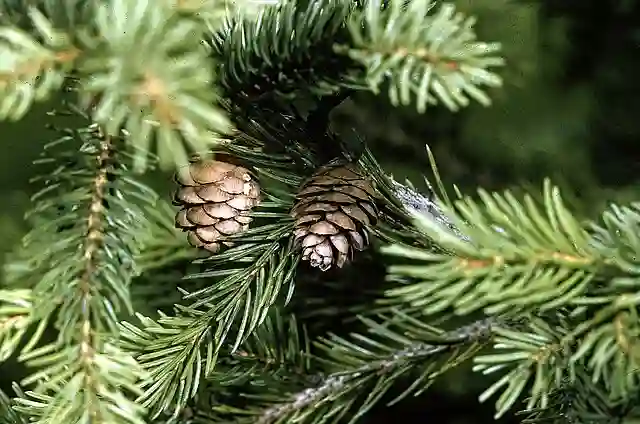
December 23 – Codonopsis
"Codonopsis, the poor man's ginseng, defines December 23."
Codonopsis symbolizes healing and vitality. You bring comfort and strength to others in times of need. Like its restorative qualities, you offer support and care in times of hardship.
Codonopsis: My Unexpected Fascination with a Bellflower Cousin
I’m Ferb Vu, and I never thought I’d find myself captivated by a genus of plants, but here I am, writing about Codonopsis. It all started with a trip to a local nursery. I was wandering through the rows of perennials, looking for something new to add to my garden, when I stumbled upon a delicate vine with bell-shaped flowers. The tag read “Codonopsis,” a name I didn’t recognize. Intrigued, I brought it home and planted it in a sunny spot.
As the plant grew, I became more and more fascinated by it. Its twining stems climbed effortlessly up a trellis, and its foliage was a beautiful shade of green. But it was the flowers that truly captivated me. They were a delicate shade of blue, with a distinctive bell shape that reminded me of its distant cousin, the Campanula. I began to research Codonopsis and discovered that it is a genus of about 49 species of flowering plants in the Campanulaceae family. They are primarily native to the mountains of Central and East Asia, with a few species found in the Himalayas and Indochina.
Diverse and Delicate Beauty
What struck me most about Codonopsis was the diversity within the genus. Some species, like Codonopsis clematidea, have large, showy flowers that are pollinated by bees. Others, like Codonopsis lanceolata, have smaller, more discreet flowers that are pollinated by moths. Some species are climbers, while others are more compact and bushy. This diversity makes Codonopsis a versatile genus that can be used in a variety of garden settings.
Here’s a list of Codonopsis species:
- Codonopsis affinis Hook.f. & Thomson
- Codonopsis alpina Nannf.
- Codonopsis argentea P.C.Tsoong
- Codonopsis atriplicifolia Yan Yu & Qiang Wang
- Codonopsis bactriana F.O.Khass., U.Kodyrov & A.Myrz.
- Codonopsis benthamii Hook.f. & Thomson
- Codonopsis bhutanica Ludlow
- Codonopsis bomiensis D.Y.Hong
- Codonopsis bragaensis Grey-Wilson
- Codonopsis bulleyana Forrest ex Diels
- Codonopsis campanulata D.Y.Hong
- Codonopsis canescens Nannf.
- Codonopsis cardiophylla Diels ex Kom.
- Codonopsis chimiliensis J.Anthony
- Codonopsis chlorocodon C.Y.Wu
- Codonopsis clematidea (Schrenk) C.B.Clarke
- Codonopsis cordifolioidea P.C.Tsoong
- Codonopsis deltoidea Chipp
- Codonopsis elliptica D.Y.Hong
- Codonopsis farreri J.Anthony
- Codonopsis foetens Hook.f. & Thomson
- Codonopsis gongshanica Qiang Wang & D.Y.Hong
- Codonopsis gracilis Hook.f. & Thomson
- Codonopsis hemisphaerica P.C.Tsoong ex D.Y.Hong
- Codonopsis henryi Oliv.
- Codonopsis hongii Lammers
- Codonopsis inflata Hook.f. & Thomson
- Codonopsis javanica (Blume) Hook.f. & Thomson
- Codonopsis kawakamii Hayata
- Codonopsis lanceolata (Siebold & Zucc.) Benth. & Hook.f. ex Trautv. – Plant FAQs: Codonopsis Lanceolata
- Codonopsis lixianica D.Y.Hong
- Codonopsis macrophylla Lammers & L.l.Klein
- Codonopsis meleagris Diels
- Codonopsis micrantha Chipp
- Codonopsis microtubulosa Z.T.Wang & G.J.Xu
- Codonopsis obtusa (Chipp) Nannf.
- Codonopsis ovata Benth.
- Codonopsis pilosula (Franch.) Nannf.
- Codonopsis reflexa D.Y.Hong
- Codonopsis rotundifolia Benth.
- Codonopsis subglobosa W.W.Sm.
- Codonopsis subscaposa Kom.
- Codonopsis subsimplex Hook.f. & Thomson
- Codonopsis thalictrifolia Wall.
- Codonopsis tsinlingensis Pax & K.Hoffm.
- Codonopsis tubulosa Kom.
- Codonopsis ussuriensis (Rupr. & Maxim.) Hemsl.
- Codonopsis viridiflora Maxim.
- Codonopsis viridis Wall.
More Than Just a Pretty Face
As I delved deeper into the world of Codonopsis, I learned that these plants are not just prized for their ornamental value. Several species, particularly Codonopsis pilosula and Codonopsis tangshen, have a long history of use in traditional Chinese medicine. The roots of these plants are believed to have a variety of medicinal properties, including boosting the immune system and treating respiratory ailments. This added another layer of intrigue to my newfound fascination.
Cultivating Codonopsis: A Rewarding Challenge
Growing Codonopsis has been a rewarding experience. They prefer well-drained soil and a sunny or partially shaded location. Once established, they are relatively low-maintenance plants. One thing I’ve learned is that they don’t like to be overwatered, especially during their dormant period in the winter. I’ve also found that they benefit from a layer of mulch to help keep their roots cool and moist.
A Continuing Journey of Discovery
My journey with Codonopsis is far from over. I’m eager to learn more about the lesser-known species and experiment with different cultivation techniques. I’m also interested in exploring the culinary potential of Codonopsis, as some species are said to have edible roots.
If you’re looking for a unique and rewarding plant to add to your garden, I highly recommend giving Codonopsis a try. Its delicate beauty, versatility, and medicinal properties make it a truly fascinating genus. Who knows, you might even find yourself as captivated by it as I am.
If i die, water my plants!



